The words and phrases you need to know to decipher Italian restaurant menus

Italian might be known as the language of love but - far more importantly - it's also the language of food.
And if you're looking for an authentic Italian foodie experience, your best bet is to steer clear of chequered tablecloths, ostentatious signage, and menus with English translations or pictures.
READ ALSO: 12 of the most useful Italian words you need to know
That might be a daunting prospect, particularly as Italians have plenty of unwritten rules when it comes to food, but with our guide you should be able to navigate restaurant menus with ease.
Ristorante, trattoria, osteria | Restaurant
In your dictionary, these terms might all share an English translation, but there's an important difference. A ristorante is the most formal and upmarket of the three with waiter service, while a trattoria is less formal, usually family-run and slightly cheaper, and an osteria - or hostaria or taverna - is the budget option.
Osterias were once local watering holes: they served only wine and you'd bring along your own food. This is still the case in a very few places, such as the historic Osteria del Sole in Bologna, but nowadays most will offer a pared-down menu made up of local specialties.
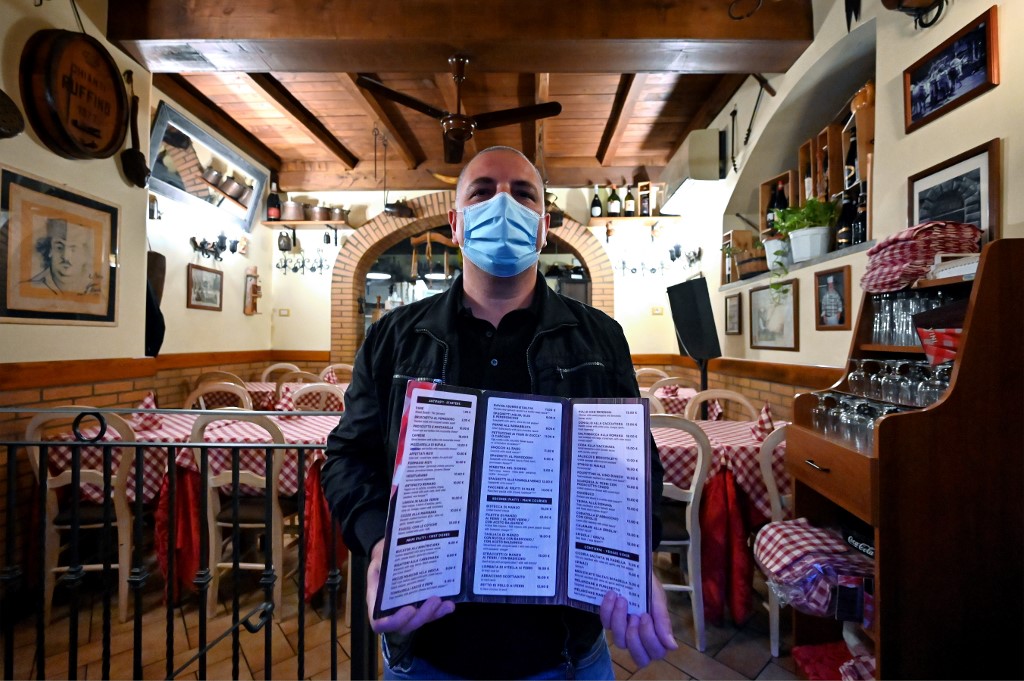
Photo: Alberto Pizzoli/AFP
The distinction between eateries is becoming less important, with many osterie shifting upmarket on the one hand and ristoranti calling themselves 'trattorie' to seem cosier on the other.
Meanwhile, if a drink is all you're after, head to an enoteca (wine bar) or birreria (pub), which will often serve small appetizers too.
READ ALSO: Italy's worst tourist scams and how to avoid them
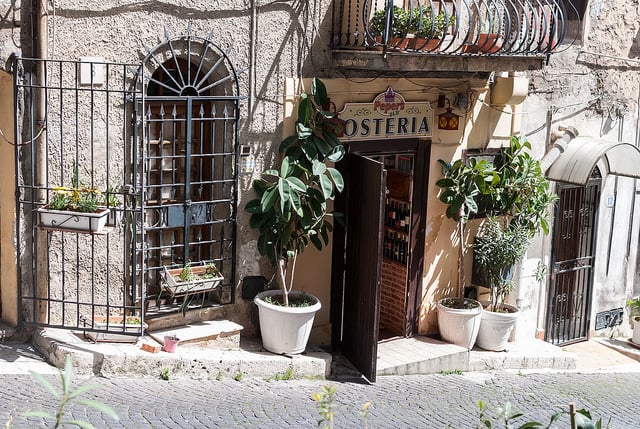 Photo: bekassine/Flickr
Photo: bekassine/Flickr
Tavola calda | Buffet-style cafeteria
Literally translating as 'hot table', a 'tavola calda' is a cafeteria or takeout place - but not as you know it.
It's a great way of getting a good lunch without spending too much: there's a selection of hot food, usually kept in dishes behind a counter, almost always prepared that day and reheated to order. There's usually a selection of several warm pasta or meat dishes, as well as salads and possibly pizza and pastries too.
Bar, caffè | Cafe
Confusingly, these are more or less the same thing and sometimes you'll see them called a 'caffè bar'. Often, they will stay open late, serving alcohol and/or aperitivo in the evening, but unlike bars in the English-speaking world, by day they're the go-to place for your coffee and 'brioche' (pastry).
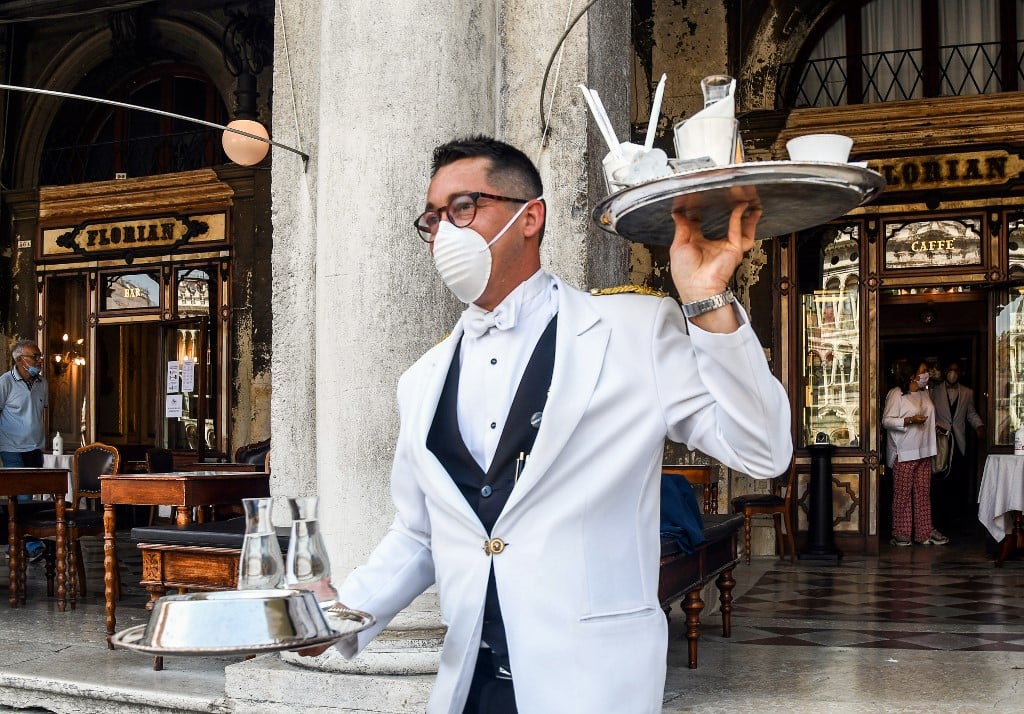
Photo: Andrea Pattaro/AFP
The ordering system is usually different here compared to places which serve sit-down meals. After eating in a trattoria or ristorante, you'll have to call a waiter over to ask for the bill, as it's considered rude to interrupt your meal - even if you finished a while ago.
However, in an Italian cafe you'll usually pay first, and it's often a confusing two-step procedure where you'll order first and get a receipt, which you then take to the till to pay and receive your food.
Pizzeria (al taglio) | Pizzeria (by the slice)
At a pizzeria, you'll sit down and have a full pizza, while at shops serving pizza al taglio you can pick up a slice for just a couple of euros.
It's worth noting that while pizzerie al taglio might be commonplace, takeaway food is much less popular in Italy than elsewhere. In particular, some visitors may be surprised to find that not all cafes offer takeaway cups, so make sure to ask if you can get a caffè da asporto (coffee to go).
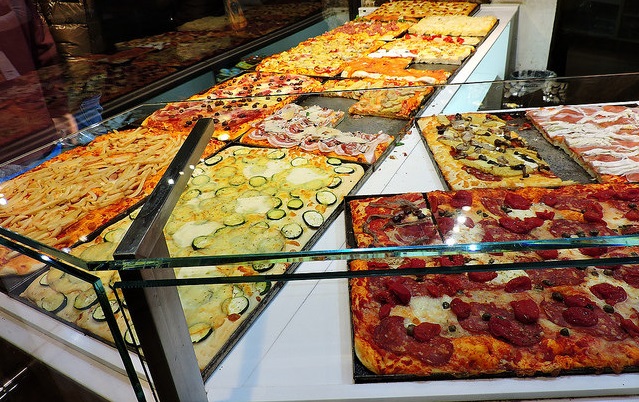
Photo: Dimitris Kamaras/Flickr
Menu a prezzo fisso | Fixed price menu
If the prospect of deciphering the entire menu seems far too complex, a set menu could be the saving grace.
Here you pay a certain price for one of a limited range of dishes, and a drink or coffee is often included (note: it will be an espresso, as Italians drink milky coffees for breakfast rather than after meals).
It's an option worth considering if you're a less adventurous eater, since the set menus typically include simple, popular dishes such as pasta with ragu or pesto. However, proceed with caution, particularly if the alternative wording 'menu turistico' (tourist menu) is used - sometimes these menus are a way of overcharging confused visitors for mediocre food.
Primo/secondo | Main course
The difference between Italian primo and secondo is not the same as English first and second course. 'Primo' dishes include pasta, risotto, broth, while the secondo is usually a type of meat dish, and may be further divided into 'mare' (sea, denoting seafood) and 'terra' (earth, denoting all other meats and vegetarian dishes). Another term indicating fish is 'alla pescatora' (fishermen's style).
READ MORE: How to decipher Italy's mind-boggling pasta menus
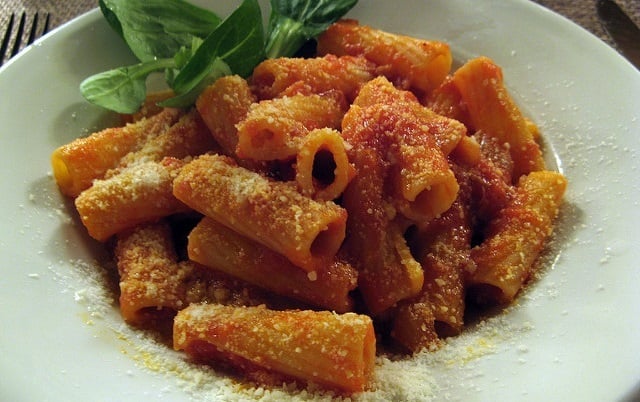
Photo: Randy OHC/Flickr
Be aware that secondi are often served alone, without any vegetables or other sides, so if you want an accompaniment order something from the 'contorni' (sides) section too. You can order both a primo and secondo, but it's also perfectly acceptable to choose one - and this is the norm if you're planning to have an antipasto (starter), contorno, or dolce (dessert) as well.
Al tavolo, al bar | At the table, at the bar/counter
Usually found on the menus at bars and caffes, these terms refer to two different prices, depending on whether you have your coffee and pastry while standing at the counter or sitting at a table, with a surcharge for the latter.
This is a common grumble among tourists who consider it deceptive, but it's the same logic as charging less for takeaway. Just make sure to watch out for those tourist traps which multiply the amount by a huge amount for the pleasure of a table seat - normally, the price difference shouldn't be more than around 50 cents per item.
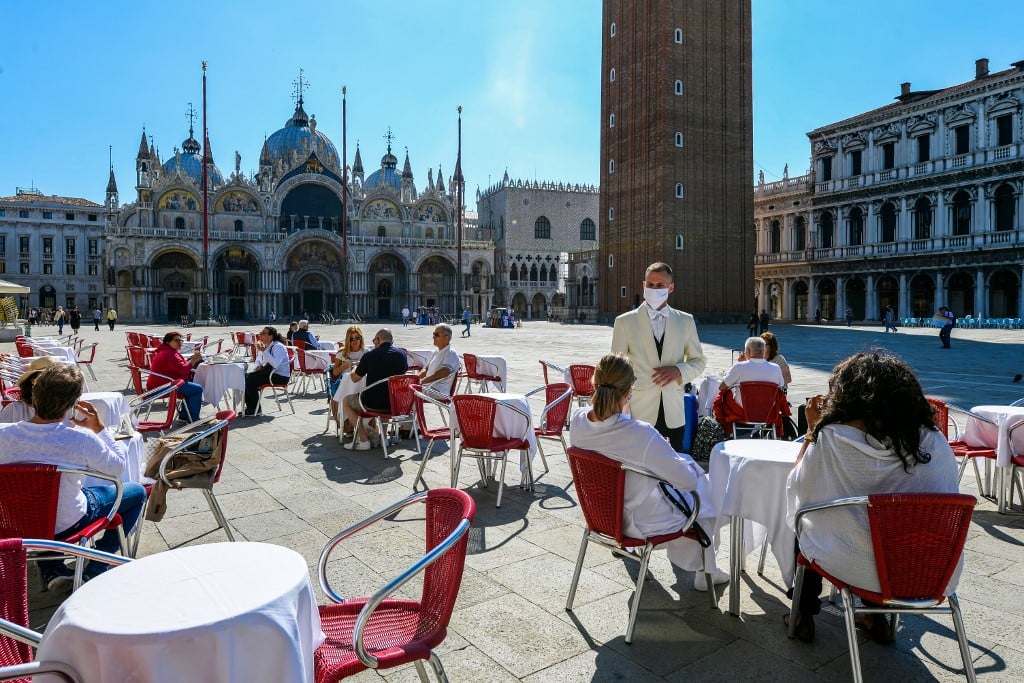
Photo: Andrea Pattaro/AFP
Coperto | Service/cover charge
Another thing that often catches out first-time visitors is the cover charge, usually mentioned in small font at the bottom of a menu. This includes service as well as the bread (pane) or breadsticks (grissini) that usually arrive at the table.
Note that the price mentioned is usually per person, and is typically between €1 and €2 each - though restaurants in touristy areas might try to make extra money off visitors by hiking up the cover charge.
READ ALSO: The bizarre Italian food rules foreigners fall foul of
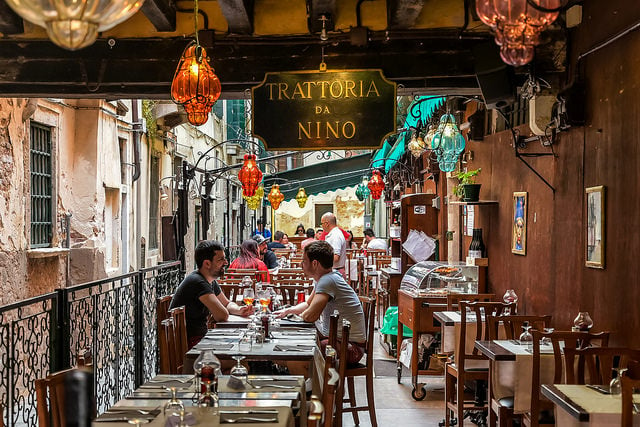
Photo: Jorge Franganillo/Flickr
Because of the ubiquity of the coperto, it's not obligatory to tip in Italy, but if you particularly enjoyed the experience you could add ten percent to the bill, or simply tell the waiter 'tenga il resto' (keep the change).
Surgelati | Frozen
In Italy, it's illegal to serve frozen food without informing customers with a disclaimer on the menu. This is typically done in one of two ways.
Some eateries will attach an asterisk to certain dishes, with an explanation at the bottom: 'Prodotti surgelati'. Alternatively, at the end of long menus, you might come across a phrase along the lines of 'alcuni prodotti potrebbero essere surgelati' (some products may be frozen), which usually means that whether dishes are frozen or fresh depends on the season. You can always ask your waiter to clarify.
Di nostra produzione | Made by us
On the other hand, if you see any dishes marked with this description, it's a sign they'll be fresh. They might also be described as 'fatto/a/i/e' in casa' (homemade).
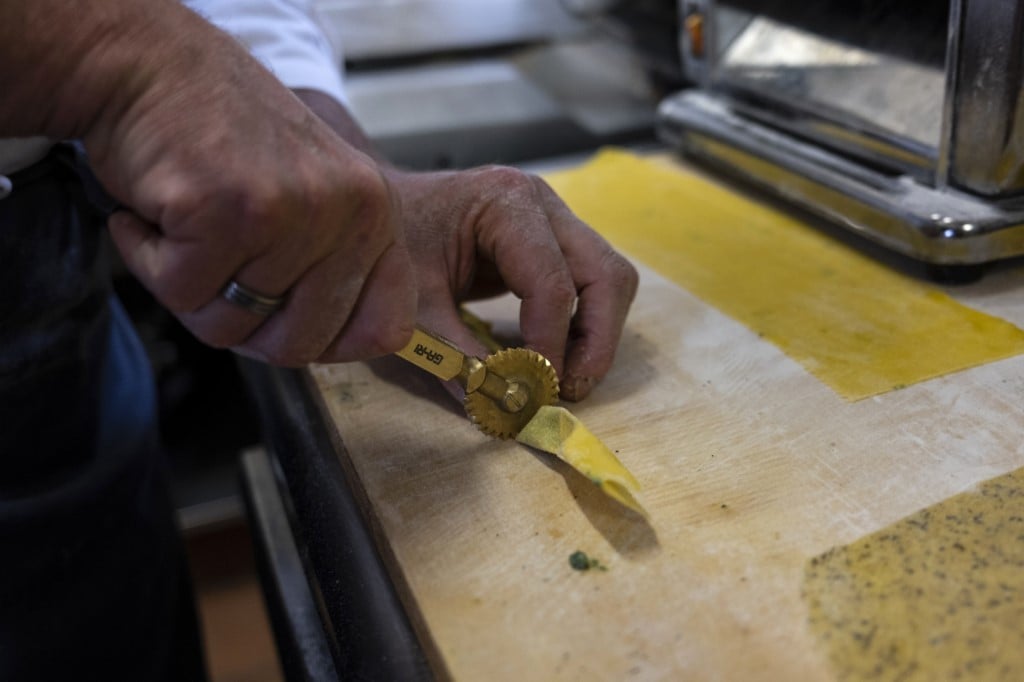
Photo: Marco Bertorello/AFP
The traditional advice for choosing a great Italian restaurant is to go for one which only has a short menu - if there are too many meals on the list, it's unlikely they'll all be done well. However, these days it's common for chefs to bulk up their menus with frozen crowd-pleasers to cater for tourists, while still devoting special attention to their signature dishes, so this is the phrase to look out for.
Buon appetito!
This article was first published in 2017.
READ ALSO:
Comments
See Also
And if you're looking for an authentic Italian foodie experience, your best bet is to steer clear of chequered tablecloths, ostentatious signage, and menus with English translations or pictures.
READ ALSO: 12 of the most useful Italian words you need to know
That might be a daunting prospect, particularly as Italians have plenty of unwritten rules when it comes to food, but with our guide you should be able to navigate restaurant menus with ease.
Ristorante, trattoria, osteria | Restaurant
In your dictionary, these terms might all share an English translation, but there's an important difference. A ristorante is the most formal and upmarket of the three with waiter service, while a trattoria is less formal, usually family-run and slightly cheaper, and an osteria - or hostaria or taverna - is the budget option.
Osterias were once local watering holes: they served only wine and you'd bring along your own food. This is still the case in a very few places, such as the historic Osteria del Sole in Bologna, but nowadays most will offer a pared-down menu made up of local specialties.

Photo: Alberto Pizzoli/AFP
The distinction between eateries is becoming less important, with many osterie shifting upmarket on the one hand and ristoranti calling themselves 'trattorie' to seem cosier on the other.
Meanwhile, if a drink is all you're after, head to an enoteca (wine bar) or birreria (pub), which will often serve small appetizers too.
READ ALSO: Italy's worst tourist scams and how to avoid them
 Photo: bekassine/Flickr
Photo: bekassine/Flickr
Tavola calda | Buffet-style cafeteria
Literally translating as 'hot table', a 'tavola calda' is a cafeteria or takeout place - but not as you know it.
It's a great way of getting a good lunch without spending too much: there's a selection of hot food, usually kept in dishes behind a counter, almost always prepared that day and reheated to order. There's usually a selection of several warm pasta or meat dishes, as well as salads and possibly pizza and pastries too.
Bar, caffè | Cafe
Confusingly, these are more or less the same thing and sometimes you'll see them called a 'caffè bar'. Often, they will stay open late, serving alcohol and/or aperitivo in the evening, but unlike bars in the English-speaking world, by day they're the go-to place for your coffee and 'brioche' (pastry).

Photo: Andrea Pattaro/AFP
The ordering system is usually different here compared to places which serve sit-down meals. After eating in a trattoria or ristorante, you'll have to call a waiter over to ask for the bill, as it's considered rude to interrupt your meal - even if you finished a while ago.
However, in an Italian cafe you'll usually pay first, and it's often a confusing two-step procedure where you'll order first and get a receipt, which you then take to the till to pay and receive your food.
Pizzeria (al taglio) | Pizzeria (by the slice)
At a pizzeria, you'll sit down and have a full pizza, while at shops serving pizza al taglio you can pick up a slice for just a couple of euros.
It's worth noting that while pizzerie al taglio might be commonplace, takeaway food is much less popular in Italy than elsewhere. In particular, some visitors may be surprised to find that not all cafes offer takeaway cups, so make sure to ask if you can get a caffè da asporto (coffee to go).

Photo: Dimitris Kamaras/Flickr
Menu a prezzo fisso | Fixed price menu
If the prospect of deciphering the entire menu seems far too complex, a set menu could be the saving grace.
Here you pay a certain price for one of a limited range of dishes, and a drink or coffee is often included (note: it will be an espresso, as Italians drink milky coffees for breakfast rather than after meals).
It's an option worth considering if you're a less adventurous eater, since the set menus typically include simple, popular dishes such as pasta with ragu or pesto. However, proceed with caution, particularly if the alternative wording 'menu turistico' (tourist menu) is used - sometimes these menus are a way of overcharging confused visitors for mediocre food.
Primo/secondo | Main course
The difference between Italian primo and secondo is not the same as English first and second course. 'Primo' dishes include pasta, risotto, broth, while the secondo is usually a type of meat dish, and may be further divided into 'mare' (sea, denoting seafood) and 'terra' (earth, denoting all other meats and vegetarian dishes). Another term indicating fish is 'alla pescatora' (fishermen's style).
READ MORE: How to decipher Italy's mind-boggling pasta menus

Photo: Randy OHC/Flickr
Be aware that secondi are often served alone, without any vegetables or other sides, so if you want an accompaniment order something from the 'contorni' (sides) section too. You can order both a primo and secondo, but it's also perfectly acceptable to choose one - and this is the norm if you're planning to have an antipasto (starter), contorno, or dolce (dessert) as well.
Al tavolo, al bar | At the table, at the bar/counter
Usually found on the menus at bars and caffes, these terms refer to two different prices, depending on whether you have your coffee and pastry while standing at the counter or sitting at a table, with a surcharge for the latter.
This is a common grumble among tourists who consider it deceptive, but it's the same logic as charging less for takeaway. Just make sure to watch out for those tourist traps which multiply the amount by a huge amount for the pleasure of a table seat - normally, the price difference shouldn't be more than around 50 cents per item.

Photo: Andrea Pattaro/AFP
Coperto | Service/cover charge
Another thing that often catches out first-time visitors is the cover charge, usually mentioned in small font at the bottom of a menu. This includes service as well as the bread (pane) or breadsticks (grissini) that usually arrive at the table.
Note that the price mentioned is usually per person, and is typically between €1 and €2 each - though restaurants in touristy areas might try to make extra money off visitors by hiking up the cover charge.
READ ALSO: The bizarre Italian food rules foreigners fall foul of

Photo: Jorge Franganillo/Flickr
Because of the ubiquity of the coperto, it's not obligatory to tip in Italy, but if you particularly enjoyed the experience you could add ten percent to the bill, or simply tell the waiter 'tenga il resto' (keep the change).
Surgelati | Frozen
In Italy, it's illegal to serve frozen food without informing customers with a disclaimer on the menu. This is typically done in one of two ways.
Some eateries will attach an asterisk to certain dishes, with an explanation at the bottom: 'Prodotti surgelati'. Alternatively, at the end of long menus, you might come across a phrase along the lines of 'alcuni prodotti potrebbero essere surgelati' (some products may be frozen), which usually means that whether dishes are frozen or fresh depends on the season. You can always ask your waiter to clarify.
Di nostra produzione | Made by us
On the other hand, if you see any dishes marked with this description, it's a sign they'll be fresh. They might also be described as 'fatto/a/i/e' in casa' (homemade).

Photo: Marco Bertorello/AFP
The traditional advice for choosing a great Italian restaurant is to go for one which only has a short menu - if there are too many meals on the list, it's unlikely they'll all be done well. However, these days it's common for chefs to bulk up their menus with frozen crowd-pleasers to cater for tourists, while still devoting special attention to their signature dishes, so this is the phrase to look out for.
Buon appetito!
This article was first published in 2017.
READ ALSO:
Join the conversation in our comments section below. Share your own views and experience and if you have a question or suggestion for our journalists then email us at [email protected].
Please keep comments civil, constructive and on topic – and make sure to read our terms of use before getting involved.
Please log in here to leave a comment.